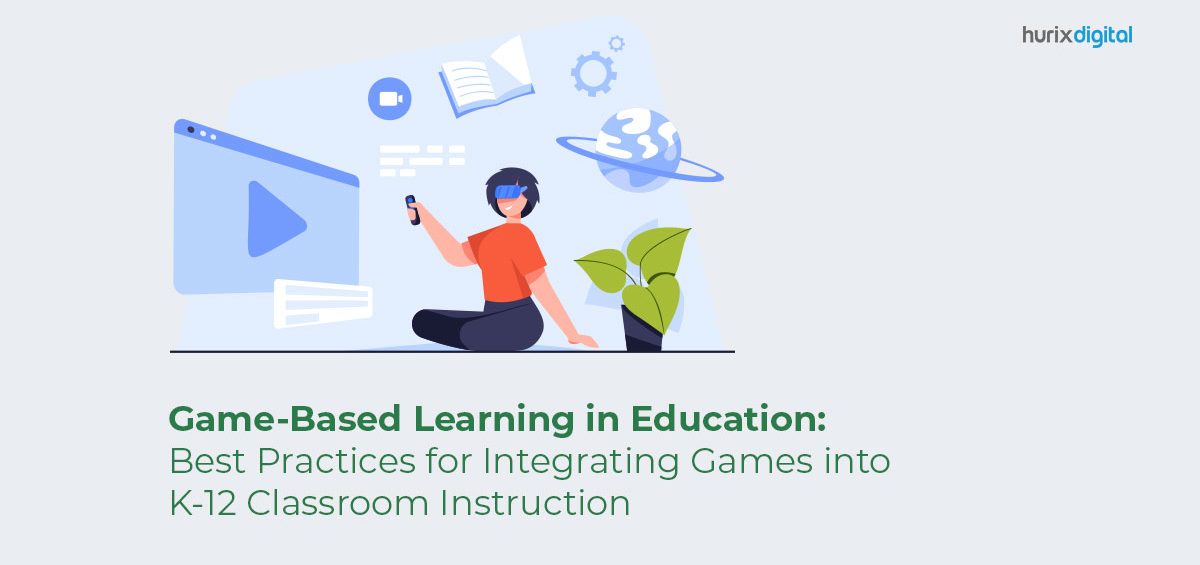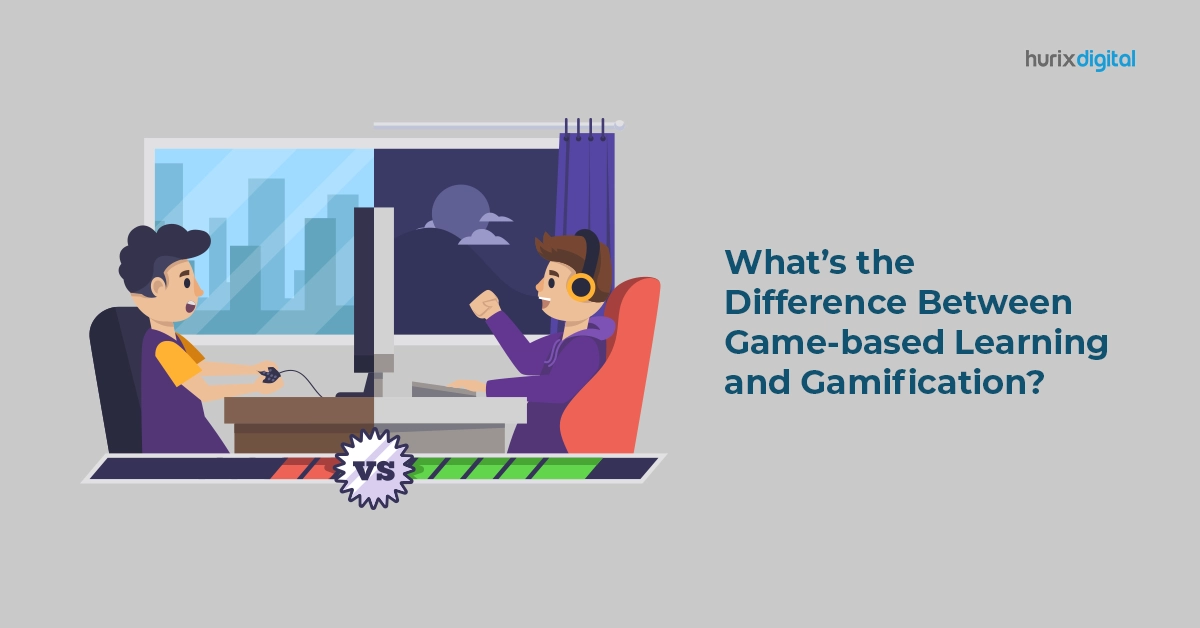Summary
This article provides a brief history of game-based learning in education, as well as the advantages and disadvantages of integrating game-based learning in education. It also provides best practices for integrating game-based learning in education.
The 21st century has seen a rise in game-based learning in education, thanks to encouraging results from classroom gamification. However, educators should be selective about the digital learning games they incorporate into their classrooms. Moreover, educators should be intentional about integrating game-based learning in the classroom. Read on for the best practices for integrating game-based learning in education.
Table of Contents:
- Brief History of Game-Based Learning in the Classroom
- Game-Based Learning Method
- Game-Based Learning & Classroom Gamification: Subtle Differences
- Reasons for Integrating Games in Education
- Integrating Games in Education: 7 Steps to Take
- The Future is Here with Game-Based Learning in Education
Brief History of Game-Based Learning in the Classroom
It is necessary to reiterate that game-based learning in education is not a new concept. Research suggests that games have been used to teach students in Africa for thousands of years. Likewise, games and play-based learning were used in ancient Greece and during the Roman Empire. From puzzle and shape games to spelling contests, matching games, and memorization games, educators have long embraced the game-based learning method. Today, thanks to technology, online game-based learning games are used by more than half of educators worldwide.
Game-Based Learning Method
In the 20th Century game-based learning in education took hold worldwide. Games such as Space War!, Sumerian Game, Oregon Trail, Number Munchers, and Sim City began to appear in classrooms. Though long-known to educators, an official theory of game-based learning was formally introduced by Jean Piaget and Lev Vygotsky who are credited with naming, and advocating game-based learning in education as a pedagogical approach.
Also Read: Is Game-Based Learning the Future of Education?
Game-Based Learning & Classroom Gamification: Subtle Differences
In short order, two unique but closely related concepts developed: game-based learning and classroom gamification. Game-based learning is the use of a game as a learning tool. The game may be a standalone tool, though it aligns with the classroom curriculum. Classroom gamification, on the other hand, is loosely defined as a process of adding game elements to instruction to increase engagement. Classroom gamification often has students divided into teams to compete against other students, often via an educational video game.
Reasons for Integrating Games in Education

Online game-based learning not only engages students but also enhances their learning experiences. Studies show that game-based learning in education offers benefits such as:
- Offering students a multi-sensory learning experience
- Providing active and experiential learning opportunities
- Enhances problem-solving and decision-making skills
- Helps students with understanding and memorization
- Motivates students
- Helps students to better focus their attention
- Bolstering knowledge retention
- Nurturing social skills and peer communication
Indeed, interactive, online game-based learning tools are a powerful arsenal in any educator’s toolbox. However, integrating games in education is not an endeavor to be taken without a carefully planned implementation.
Integrating Games in Education: 7 Steps to Take
Before introducing a video game to any classroom, educators should plan for a responsible integration process. These seven steps can help with the integration of game-based learning in the classroom.
1.Define Clear Learning Objectives From Game-Based Learning Games
Before introducing digital learning games, clear learning objectives that align with the curriculum should be defined. As such, educators ought to determine the specific skills or knowledge areas that the game must address. Defining and confirming these objectives are met will ensure that educators select game-based learning games that meet educational requirements and maximize learning.
2.Choose High-Quality Digital Learning Games
There is no shortage of games available to help educators with classroom gamification. Unfortunately, not all game-based learning games are created equal. Educators will need to ensure that only high-quality digital learning games are integrated into the classroom.
High-quality games for the classroom will offer:
- Educational Value
- Accurate content
- Sound pedagogy
- Alignment with Educational Standards
3. Provide Thorough Instruction Before Launching Online Game-Based Learning
To maximize the usefulness of game-based learning in education, educators should plan to provide thorough pre-game instruction. The learning objectives should be made clear to students. Relevant concepts should be taught. Students should understand why the game supplements their current field of study. Lastly, the expectations of students after playing the game should be made clear. Providing thorough instruction is essential to successfully integrate games into education, irrespective of the subject matter.
4. Promote Collaboration and Communication As Part of Classroom Gamification
Classroom gamification often involves dividing students into teams. This helps to promote collaboration and communication between students. It also fosters an environment conducive to creative thinking, a free flow of ideas, strategic thinking, and problem-solving. When games are integrated thoughtfully, classroom gamification breeds innovation, cooperation, and critical thinking skills.
Post-game discussion is also useful as it helps to reinforce learning objectives, solidify a deeper understanding of the subject matter, and foster a sense of camaraderie among students.
5. Balance Game-Based Education With Traditional Educational Instruction
Game-based learning in education is not meant to replace educators. Although games are often enjoyed by educators and even enjoyable for students, they should not replace lectures, textbook reading, or manual problem-solving. Instead, games should be balanced with traditional instruction.
Educators will need to determine an appropriate balance between game-based education and traditional instruction, to fulfill curriculum. Because each game and grade level is unique, it will be up to the educator to determine how much time is spent on game-based learning in the classroom.
6. Monitor Students’ Online Game-Based Learning Progress
A key benefit of game-based learning in education is that results are immediate, allowing educators to provide instant feedback and real-time observation of progress. Gentle corrections, reinforced objectives, and constructive criticism can be delivered while students are playing the games. This is in contrast to delayed feedback, such as that given after a student has completed, for example, a history essay, or a science exam. The immediate feedback loop can help students to work on their weaknesses in real-time, address areas needing improvement, and foster a growth mindset that can enhance their learning experience.
7. Reflect and Evaluate the Effectiveness of Game-Based Learning in Classroom
After integrating game-based learning in the classroom, educators should plan to take time to evaluate and reflect on the usefulness and effectiveness of various game-based learning games. Is a particular game accomplishing its goals? Is it too challenging for students to be useful? Conversely, is it too easy for your students? Game-based learning in education must be regularly evaluated and analyzed to ensure it continues to meet educational requirements.
Educators may also wish to ask their students for their thoughts on various games. Do they feel that a particular game has any unique benefits (aside from being fun to play)? Did they learn anything new from the game? Can they reiterate the learning objectives after playing the games? Reflection and evaluation will help educators to determine which digital learning games are helpful, and which should not be used in the future.
The Future is Here with Game-Based Learning in Education
Hurix, together with Game Learning, provides premium game-based learning games for K-12 students. Game Learning’s digital learning games are available for Maths, Science, History, and ELA. To learn more about integrating game-based learning in education, contact us today.
Frequently Asked Questions (FAQs)
1. What are the benefits of integrating games into K-12 classroom instruction?
A. Integrating games into classroom instruction can enhance student engagement, motivation, critical thinking skills, problem-solving abilities, collaboration, and provide opportunities for personalized learning experiences.
2. What are the benefits of game-based learning?
A. Benefits include increased student engagement, motivation, critical thinking, problem-solving skills, collaboration, and deeper content understanding.
3. Can games be used for formative assessment?
A. Yes, games can offer real-time feedback, progress tracking, and performance analytics, aiding teachers in assessing student learning.
4. How to manage screen time when using games in the classroom?
A. Establish guidelines, set time limits, balance game time with other instructional activities, and ensure a healthy balance of digital and non-digital experiences.
5. How can game-based learning be effectively managed in the classroom?
A. Teachers should establish clear expectations, rules, and guidelines for game-based learning, provide scaffolding and support, and monitor student progress and behavior during game activities.











